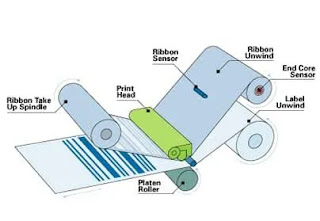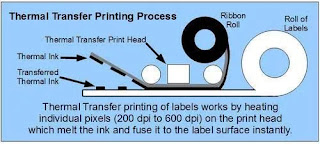What is Therm Printing Technology?
Thermal printing technology (also known as direct thermal printing) is a digital printing technology that creates a printed image by passing paper with a thermochromic coating, commonly known as thermal paper, over a print head made up of tiny electrically heated elements. The coating turns black where it is heated, creating an image.
Although some two-color designs exist, most thermal printers are monochrome (black and white).
Thermal transfer printing technology differs from heat-sensitive paper in that it uses plain paper with a heat-sensitive ribbon rather than heat-sensitive paper, but it uses similar print heads.
Design
Thermal printers are usually quieter and faster than impact dot matrix printers. They are also smaller, lighter, and use less power, which makes them ideal for portable and retail applications.
Many popular microcomputer systems from the late 1970s and early 1980s included both first-party and aftermarket thermal printers, such as the Atari 822 printer for Atari 8-bit systems, the Apple Silentype for the Apple II, and the Alphacom 32 for the Sinclair ZX Spectrum and ZX81. They frequently used unusually sized supplies and were frequently used for making permanent computer records of information rather than for correspondence.
Many fax machines used thermal printing technology throughout the 1990s. However, by the early twenty-first century, thermal wax transfer, laser, and inkjet printing technology had largely replaced thermal printing technology in fax machines, allowing printing on plain paper.
Because of their portability, speed, and ability to create continuous reels or sheets, thermal printers are commonly used in seafloor exploration and engineering geology. Thermal printers are commonly used in offshore applications to print real-time records of side scan sonar and subseafloor seismic imagery. Thermal printers are sometimes used in data processing to quickly create hard copies of continuous seismic or hydrographic records stored in digital SEG Y or XTF format.
Thermal printing technology is commonly used in flight progress strips used in air traffic control.
The Game Boy Printer, which was released in 1998, was a small thermal printer that was used to print certain elements from Game Boy games.
Many common ultrasound sonogram devices in the United Kingdom output the scan results onto thermal paper. This can cause issues if the parents want to preserve the image by laminating it, as the heat from most laminators will darken the entire page—this can be tested beforehand on a non-critical thermal print. Making and laminating a permanent ink duplicate of the image is an option.


